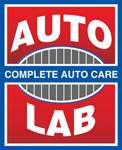HOW CAN YOU TELL WHEN YOU NEED NEW TIRES?
Tires are the only point of contact between your vehicle and the road surface. To ensure you can stop safely or navigate quickly around an object on the highway, you want to ensure your tires have sufficient tread and are wearing evenly.
How Do I Know When My Car Needs New Tires?
Most of the time, you need to replace your tires when the tread wears out. Sometimes, you’ll need a new tire if there’s a bulge or other damage to the sidewall (side of the tire) or excessive cracking in the rubber.
Tread-wise, you’re required by law to have at least 2/32 inch of tread on your tires. But Tire Rack’s test on a driving track makes a compelling case for replacing the tires when there’s 4/32 inch of tread remaining.
How much difference does the lower tread depth make? Try 100 feet. During the test, vehicles started from a speed of 70 mpg. Those outfitted with 2/32 inch tire treads took about 100 feet longer to stop and were still traveling at about 45 mph when they reached the spot on the track where the vehicles with the 4/32 inch tires had already come to a stop.
So ask yourself: How much tire tread do you want to feel safe?
How Do I Measure My Tire Tread Depth?

For a quick gauge, all it takes is a penny or a quarter. The video above demonstrates these methods, plus talks about tires treadwear indicators.
To check for 4/32 inch of tread depth, place a quarter in the groove between the tire treads. Washington’s head should be facing toward the groove itself. If the tire tread covers the top of his head, you have at least 4/32 of tread remaining.
To check for 2/32 inch of tread depth, use a penny instead and see if part of Lincoln’s head is covered by the tread.
It’s best to check several places in case the tread is not wearing evenly.
Why Choose Auto Lab Over a Big Box Store?
For starters, you get lifetime free tire rotations when you buy a set of four at Auto Lab. This means you can have your oil changed and tires rotated all at one time! No need to make a separate trip to the tire store.
But more importantly, we help you save substantial money by recommending tires that are best suited for you, your driving habits and your car—not what’s on sale this month and not what we need to clear out of old inventory.
Here’s an example of what we mean: If you’re going to keep your car for 3 more years and you drive 15,000 miles a year, we would recommend a 60,000-mile tire so the tire will still have plenty of tread when you sell or trade in the car. If you buy a 45,000-mile tire, you’ll have to replace the tires first!
In addition, our ASE-Certified technicians take the time to properly mount and balance the new tires. Proper installation protects against slow air leaks, ensures a smooth ride, and promotes longer tread life.
What Size Tires Do I Need?
On the sidewall of your tire and on a decal in the glovebox or door jamb, you’ll find a code that tells the tire’s size and capabilities. The code will look like this: P195/60R16 89H M+S.
What does all that mean?
- P – Type of tire (P indicates passenger, T indicates temporary, LT is light truck, and C is commercial)
- 195 – Width of the tire across the tread in millimeters
- 60 – Aspect ratio of the sidewall compared to the width
- R – Radial construction
- 16 – Diameter of the rim in inches
- 89 – Tire’s load rating (89 indicates the tires can carry approximately 1,279 pounds)
- H – Tire’s speed rating (H indicates maximum speed of 130 mph)
- M+S – Tire is suitable for all-season driving
What Else Should Be Done at the Same Time?
When you’re investing $500-1,000 or more into new tires, we highly recommend a wheel alignment. And as part of the alignment, we’ll make sure the shocks, struts, steering and suspension parts are in good order. Otherwise, the tread will wear out faster than it should, and you’ll have to spend money on new tires again—sooner than you should have.
When you bring your car to Auto Lab, we’ll inspect your shocks, struts and more before we install new tires and can advise you accordingly.
How Often Should I Have a Tire Rotation?
With the cost of new tires today, we highly recommend regular tire rotations to ensure you get the most mileage out of a set of tires. How often should you rotate the tires? A rough guideline is every 12,000 to 15,000 miles. But that can vary depending on your vehicle, your driving habits and the roads you drive on. When you bring your vehicle to Auto Lab for regular oil changes and maintenance, we’ll inspect the tires and advise you of when you need to rotate the tires.

